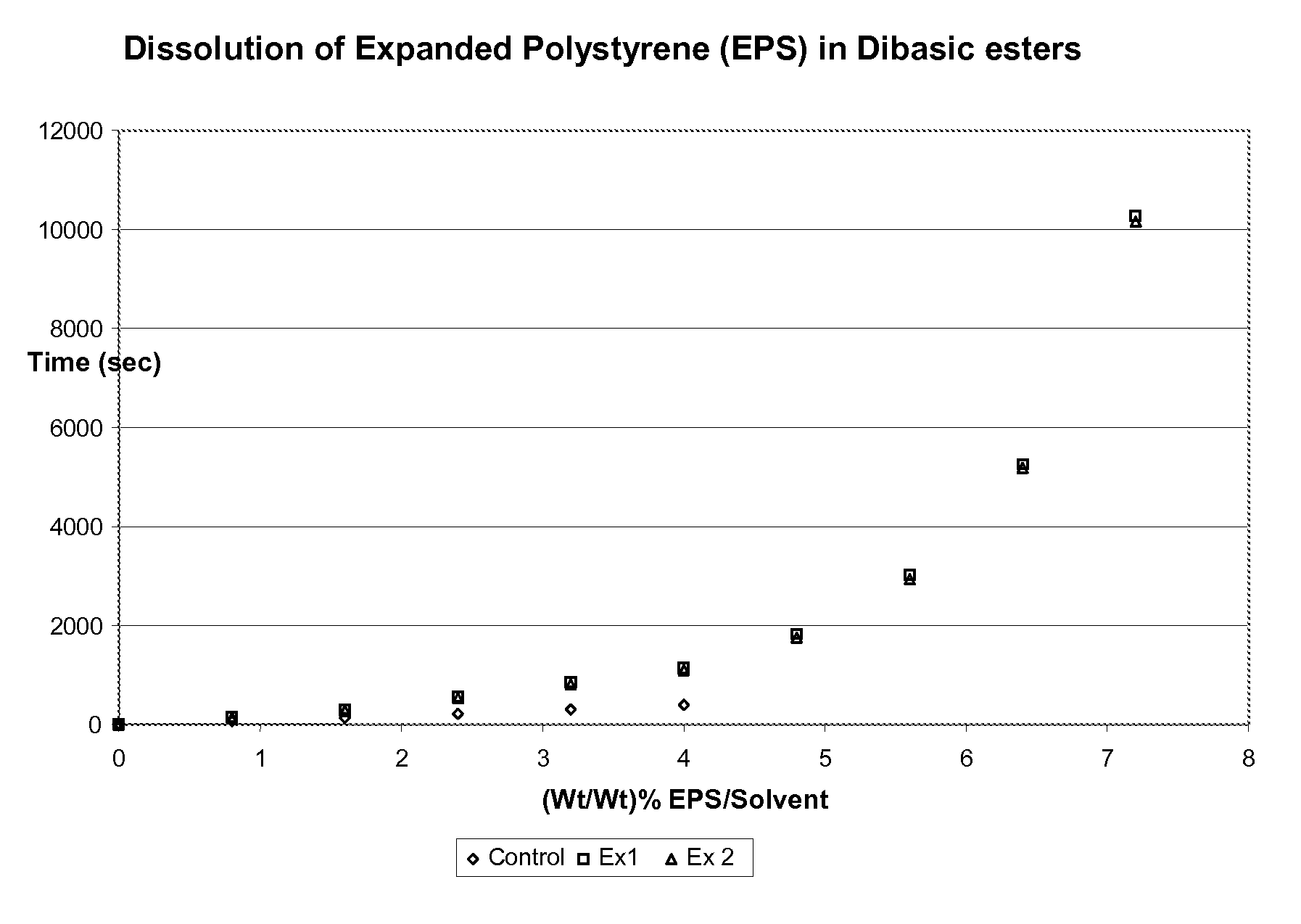Systems and methods for polystyrene foam recycling using branched dibasic esters
a polystyrene foam and dibasic ester technology, applied in the field of systems and methods for can solve the problems of uneconomical recycling, lack of biodegradability, and significant drawbacks of polystyrene-based products, and achieve the effects of reducing the volume of foam, enhancing the economics of recycling polystyrene foam, and reducing the volume of polystyrene foam
- Summary
- Abstract
- Description
- Claims
- Application Information
AI Technical Summary
Benefits of technology
Problems solved by technology
Method used
Image
Examples
experiment 1
[0059]As can be seen from FIG. 1, the Control solvent no longer dissolves polystyrene between 4% and 4.8%, which is where the Control solvent became saturated (thus, there are no data points past these respective points). Ex 1 (branched dibasic esters+trace adipate) and Ex 2 (branched dibasic esters) were saturated around 18% (actually between 18% and 18.8%), which is significantly and unexpectedly higher than the Control.
[0060]While not being bound by theory, it is believed that the solubility of Ex1 and Ex2 are obtained from the non-linear portion of this mixture and not the linear portion.
[0061]
TABLE 1Approximate SaturationConcentration of EPSControl (linear DBEs)4%Ex 1 (predominantly non-linear18%DBEs)Ex 2 (non-linear DBEs)18%
PUM
| Property | Measurement | Unit |
|---|---|---|
| flash point | aaaaa | aaaaa |
| vapor pressure | aaaaa | aaaaa |
| flash point | aaaaa | aaaaa |
Abstract
Description
Claims
Application Information
 Login to View More
Login to View More - R&D
- Intellectual Property
- Life Sciences
- Materials
- Tech Scout
- Unparalleled Data Quality
- Higher Quality Content
- 60% Fewer Hallucinations
Browse by: Latest US Patents, China's latest patents, Technical Efficacy Thesaurus, Application Domain, Technology Topic, Popular Technical Reports.
© 2025 PatSnap. All rights reserved.Legal|Privacy policy|Modern Slavery Act Transparency Statement|Sitemap|About US| Contact US: help@patsnap.com



